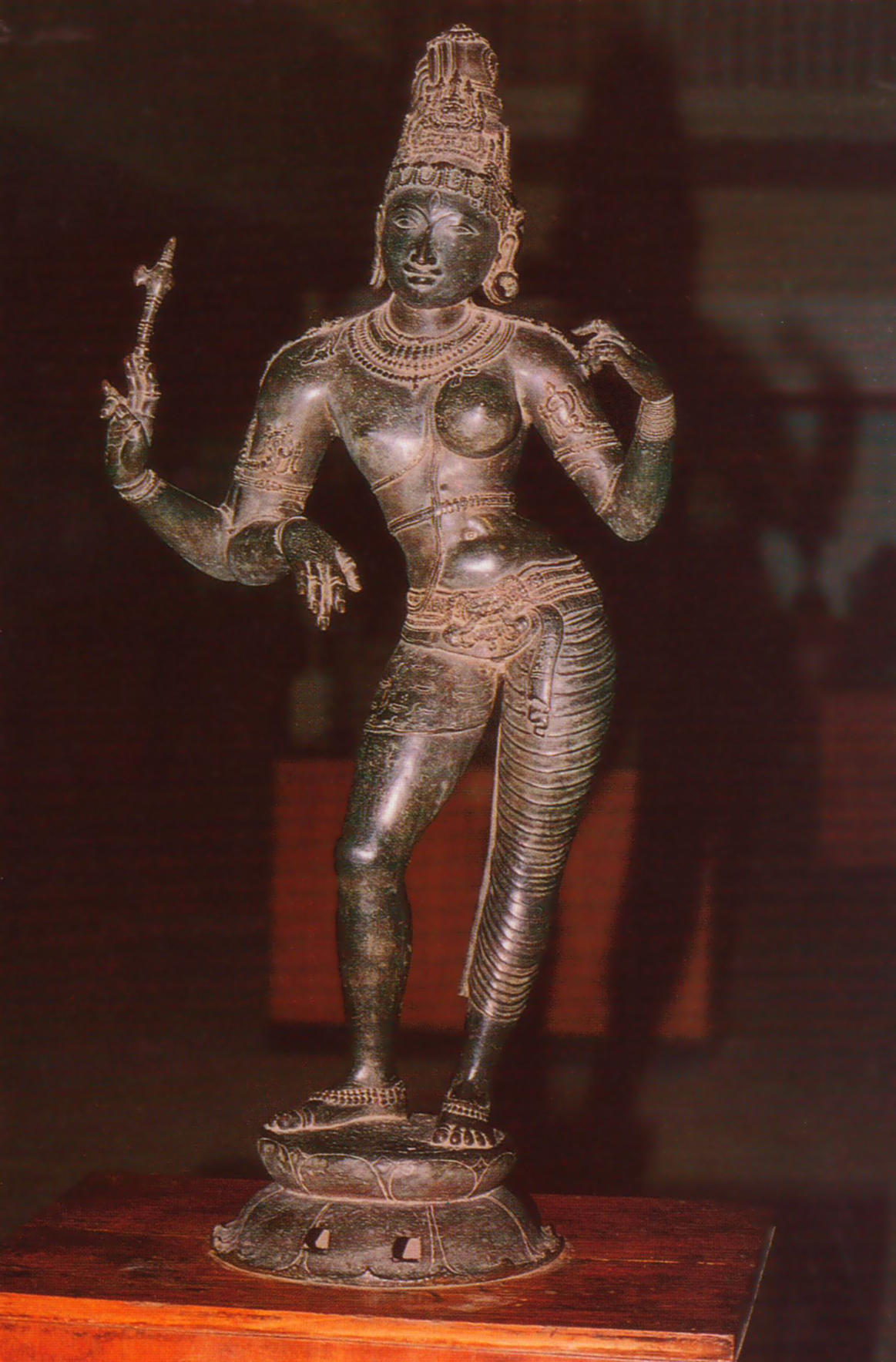
Photo: Madras Museum
Shiva Ardhanarishvara
Chola period, 11th century
Government Museum, Madras

Photo: Madras Museum |
Shiva ArdhanarishvaraChola period, 11th century
|
Shiva Ardhanarishvara is the half-male, half-female form. On this statue, the proper right is the male side. Most obviously, the right breast is male (although full), the left breast is female. The left side displays a gently rounded belly, feminine hip, and straight leg encased in sheer "trousers;" the right leg is cocked and poised, its swelling calf and thigh muscles shown off by "shorts." Differences, if any, between the right and left sides of the face are not evident in this photo. There are two right arms, the upper holding a southern "Shiva Axe," and a single left arm. The lower right hand points towards - and thereby emphasizes - the masculine right leg, while the left hand similarly gestures towards the left breast. (But the positions, attributes, and numbers of arms can vary in this form - see for example the sculpture in Jaipur city palace.)
Artistically, male and female postures and physical forms have been combined very successfully in this statue. The image is well-known, and has been reproduced in many art history books.
Interpretatively, the androgyne form of Shiva can be described in several (equivalent) ways:
The form expresses the Godhead as the unity of the male and female principles, an idea that is also seen at Elephanta. Although a true (metaphysical) unity is implied, such a concept can only be expressed in art by a physical union or joining.
India conceptualizes the male and female principles differently than most other cultures. In India, the male principle is passive, the female shakti is active. In China, as in the West, the male principle (yang) is active and the female principle (yin) is passive. However, in the additive cultures of the Far East, and unlike the West, this polarity is nondualistic - an opposite which is not in opposition.
Male-female polarity with its associated categories (male/female, hot/cold, active/passive, wet/dry, etc) is almost certainly a cultural universal, but particular attributes will be distributed across these categories in a culturally-specific way.

|

|

|